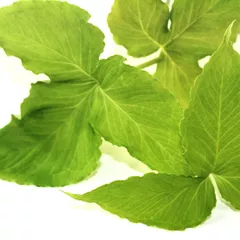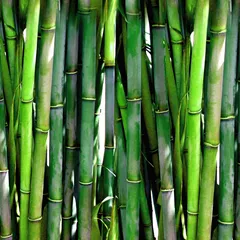Rebellious Liver Qi invading the Stomach
The information provided here is not a replacement for a doctor. You shouldn't use it for the purpose of self-diagnosing or self-medicating but rather so you can have a more informed discussion with a professional TCM practitioner.
At a glance
Preliminary reading: What is a pattern? The Liver in Chinese Medicine The concept of Qi The Stomach in Chinese Medicine
Key attributes
Chinese name: 肝气横逆犯胃 Pinyin name: Gān Qì Hèng Nì Fàn Wèi
Pattern nature: Full combined pattern
Pattern(s) it combines from: Rebellious Liver Qi
Causes
Precursor patterns: Rebellious Liver Qi
Common causes: 1. Emotional stress, 2. Bad eating habits
Diagnosis
Common symptoms: Belching Hiccuping Weak Limbs Irritability Epigastric pain and seven other symptoms
Pulse type(s): Weak (Ruo), Wiry (Xian)
Tongue description: Normal-coloured or slightly Red on the sides
Treatment
Treatment principle: Subdue rebellious Liver Qi, tonify the Stomach.
Common formulas: Xuan Fu Dai Zhe Tang Ban Xia Hou Pu Tang Si Mo Tang and two other formulas
Pathology
Liver Qi is said to be rebellious when its horizontal movement is accentuated. This interferes with the descending of Stomach Qi, making it ascend instead. Hence the symptoms of belching, nausea and vomiting. It is one of the reason causing Rebellious Stomach Qi.
Rebellious Liver Qi also impairs the Stomach's function of rotting and ripening of food, resulting in distension in the epigastrium and sour regurgitation.
There are typically two types of presentations for this pattern.
The first is when the Excess of the Liver is more predominant. It is said that the Liver's overactivity invades the Stomach. In this presentation the symptoms related to Rebellious Liver Qi are more pronounced: distension, pain and irritability.
In the second presentation the Stomach is weak and ‘allows’ itself to be invaded by the Liver, even when the Liver Excess is relatively mild. In this scenario the Stomach-related symptoms are more important.
Those two presentations are the reason why the tongue can either be Red on the sides (first presentation) or normal coloured (second presentation).
Causes
Precursor patterns: Rebellious Liver Qi invading the Stomach can derive from Rebellious Liver Qi
Emotional stress: Anger, frustration or resentment are all emotions that affect the Liver and which, if felt for a prolonged period of time (or very intensively over a short period), cause Liver Qi to stagnate. Stagnant Liver Qi may become Rebellious, accentuating its horizontal movement towards the Spleen. This disturbs the Spleen function of transformation and transportation and it prevents Spleen Qi from rising.
Bad eating habits: Irregular eating, eating in a hurry, when worried, when angry or while working can cause Liver Qi to rebel towards the Spleen.
Diagnosing Rebellious Liver Qi invading the Stomach
Diagnosing a pattern in Chinese Medicine is no easy feat and should be left to professional practitioners. In particular one has to know how to differentiate between different types of pulses and tongue coatings, shapes and colors as well as learn to read from a long list of seemingly unrelated symptoms.
Pulse type(s): Weak (Ruo) or wiry (Xian)
Tongue description: Normal-coloured or slightly Red on the sides
Main symptoms: Belching Hiccuping Weak Limbs Irritability Epigastric pain Frequent sighing Hypochondrial pain Sour regurgitation Nausea or vomiting Epigastric distension Hypochondrial distention A feeling of oppression in the epigastrium
Diagnosis commentary: Key characteristic symptoms of this pattern are the epigastric and hypochondrial distension and pain as well as belching, nausea and vomiting.
Treating Rebellious Liver Qi invading the Stomach
Treatment principle
Subdue rebellious Liver Qi, tonify the Stomach.
Herbal formulas used to treat Rebellious Liver Qi invading the Stomach



The top herbs in Ban Xia Hou Pu Tang are Crow-Dipper Rhizomes (Ban Xia), Houpu Magnolia Bark (Hou Pu) and Poria-Cocos Mushrooms (Fu Ling)
Ban Xia Hou Pu Tang
Source date: 220 AD
Number of ingredients: 5 herbs
Key actions: Regulates the flow of Qi, . Clears Phlegm. Treats esophageal spasm. Descends Rebellious Qi. Dissipates clumps. Relieves Stagnation.
Formula summary
Ban Xia Hou Pu Tang is a 5-ingredient Chinese Medicine formula. Invented in 220 AD, it belongs to the category of formulas that promote Qi movement.
Besides Rebellious Liver Qi invading the Stomach, Ban Xia Hou Pu Tang is also used to treat Stomach Qi Stagnation or Heart Qi Stagnation.



The top herbs in Xuan Fu Dai Zhe Tang are Inula Flowers (Xuan Fu Hua), Hematite (Dai Zhe Shi) and Crow-Dipper Rhizomes (Ban Xia)
Xuan Fu Dai Zhe Tang
Source date: 220 AD
Number of ingredients: 7 herbs
Key actions: Regulates the downward flow of Stomach Qi. Expectorant, treats hiccups.
Formula summary
Xuan Fu Dai Zhe Tang is a 7-ingredient Chinese Medicine formula. Invented in 220 AD, it belongs to the category of formulas for a rebellious Qi.
Besides Rebellious Liver Qi invading the Stomach, Xuan Fu Dai Zhe Tang is also used to treat Rebellious Qi or Phlegm-Fluids in the Stomach and Small intestine.



The top herbs in Si Mo Tang are Lindera Roots (Wu Yao), Agarwood (Chen Xiang) and Ginseng (Ren Shen)
Si Mo Tang
Source date: 1253 AD
Number of ingredients: 4 herbs
Key actions: Promotes the movement of Qi. Directs rebellious Qi downward. Expands the chest and dissipates clumping.
Formula summary
Si Mo Tang is a 4-ingredient Chinese Medicine formula. Invented in 1253 AD, it belongs to the category of formulas that promote Qi movement.
Besides Rebellious Liver Qi invading the Stomach, Si Mo Tang is also used to treat Qi Stagnation.



The top herbs in Ju Pi Zhu Ru Tang are Tangerine Peel (Chen Pi), Bamboo Shavings (Zhu Ru) and Ginseng (Ren Shen)
Ju Pi Zhu Ru Tang
Source date: Essentials from the Golden Cabinet
Number of ingredients: 6 herbs
Key actions: Directs rebellious Qi downward. Stops hiccup. Augments Qi. Clears heat.
Formula summary
Ju Pi Zhu Ru Tang is a 6-ingredient Chinese Medicine formula. Invented in Essentials from the Golden Cabinet, it belongs to the category of formulas for a rebellious Qi.
Besides Rebellious Liver Qi invading the Stomach, Ju Pi Zhu Ru Tang is also used to treat Rebellious Qi.



The top herbs in Ding Xiang Shi Di Tang are Cloves (Ding Xiang), Persimmon Calyxes (Shi Di) and Fresh Ginger (Sheng Jiang)
Ding Xiang Shi Di Tang
Source date: 1706 AD
Number of ingredients: 4 herbs
Key actions: Augments the Qi. Warms the Middle Burner. Directs Rebellious Qi downward. Stops hiccup.
Formula summary
Ding Xiang Shi Di Tang is a 4-ingredient Chinese Medicine formula. Invented in 1706 AD, it belongs to the category of formulas for a rebellious Qi.
Besides Rebellious Liver Qi invading the Stomach, Ding Xiang Shi Di Tang is also used to treat Rebellious Stomach Qi.
Diet recommendations
Adopting good eating habits are very important to prevent this pattern. Eat at regular intervals and take the time to eat. Avoid working or other stressful activities while eating.
To calm the Liver work with the emotions of anger, frustration and resentment by finding constructive outlets to express and release them. Above all, do not repress or stuff your emotions. Avoid excessive physical activity, such as sex or exercise. Regularity of habits helps to regulate Liver Qi.
Consequence patterns
If it lasts a long time, this pattern may weaken the Stomach and injure Stomach Yin
